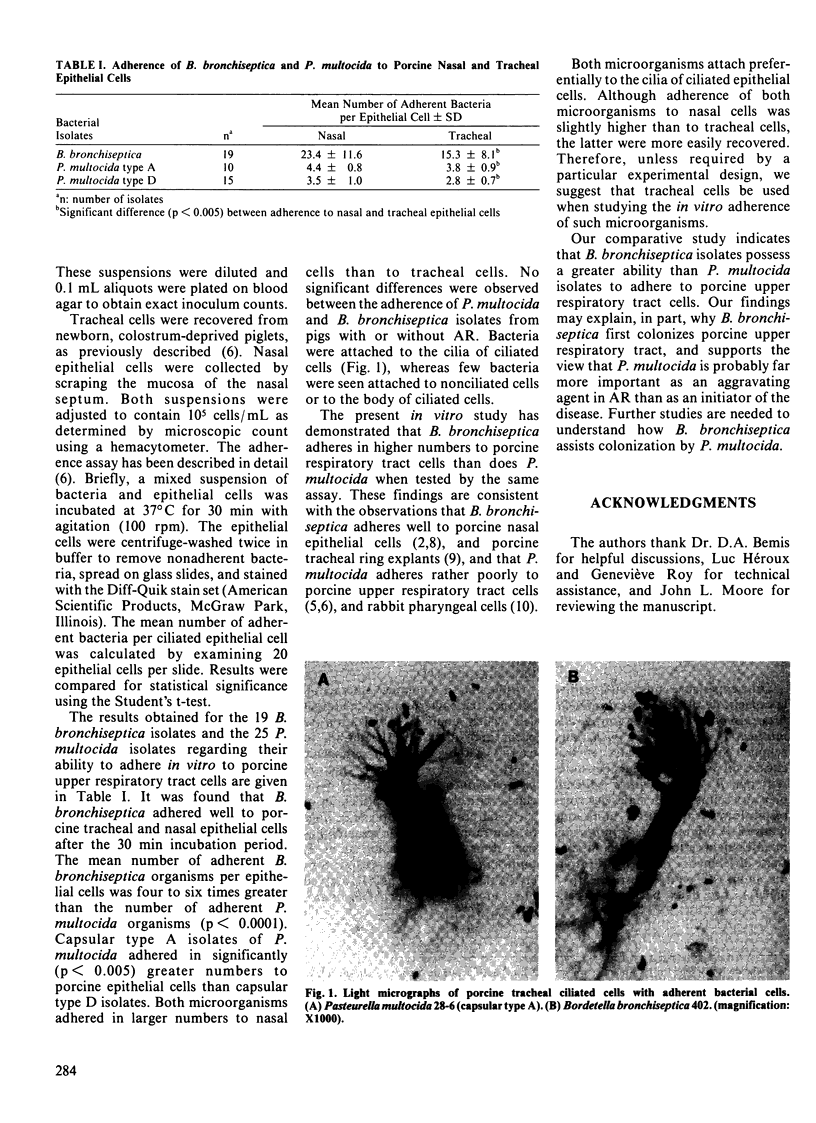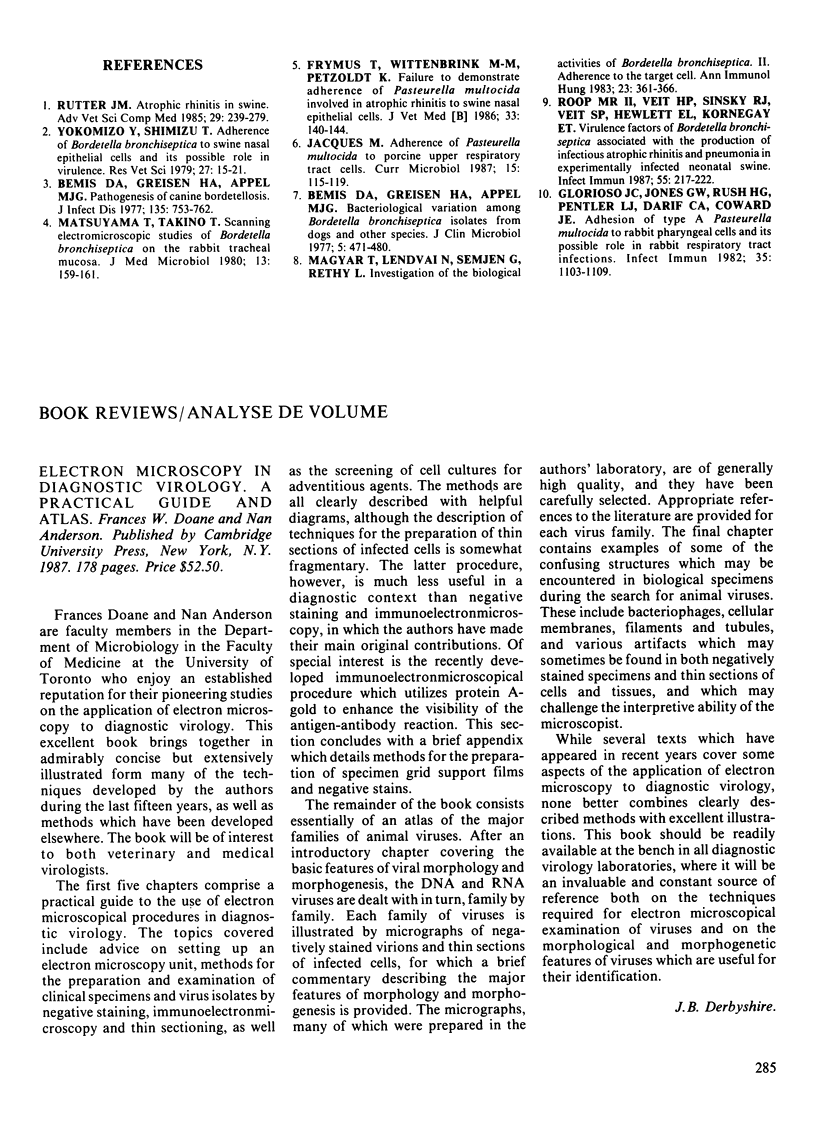Abstract
The ability of 19 different Bordetella bronchiseptica isolates and 25 Pasteurella multocida isolates to adhere in vitro to porcine nasal and tracheal epithelial cells was examined. It was found that B. bronchiseptica adhered well to upper respiratory tract cells. In contrast the number of P. multocida organisms which adhered was four to six times less than the number of B. bronchiseptica adherent organisms. This difference was statistically significant (p less than 0.0001). Both microorganisms adhered in greater numbers to nasal cells than to tracheal cells (p less than 0.005). The data indicated that B. bronchiseptica possesses a greater ability than P. multocida to attach to porcine upper respiratory tract cells.
Full text
PDF


Images in this article
Selected References
These references are in PubMed. This may not be the complete list of references from this article.
- Bemis D. A., Greisen H. A., Appel M. J. Bacteriological variation among Bordetella bronchiseptica isolates from dogs and other species. J Clin Microbiol. 1977 Apr;5(4):471–480. doi: 10.1128/jcm.5.4.471-480.1977. [DOI] [PMC free article] [PubMed] [Google Scholar]
- Bemis D. A., Greisen H. A., Appel M. J. Pathogenesis of canine bordetellosis. J Infect Dis. 1977 May;135(5):753–762. doi: 10.1093/infdis/135.5.753. [DOI] [PubMed] [Google Scholar]
- Frymus T., Wittenbrink M. M., Petzoldt K. Failure to demonstrate adherence of Pasteurella multocida involved in atrophic rhinitis to swine nasal epithelial cells. Zentralbl Veterinarmed B. 1986 Mar;33(2):140–144. doi: 10.1111/j.1439-0450.1986.tb00013.x. [DOI] [PubMed] [Google Scholar]
- Glorioso J. C., Jones G. W., Rush H. G., Pentler L. J., Darif C. A., Coward J. E. Adhesion of type A Pasteurella mulocida to rabbit pharyngeal cells and its possible role in rabbit respiratory tract infections. Infect Immun. 1982 Mar;35(3):1103–1109. doi: 10.1128/iai.35.3.1103-1109.1982. [DOI] [PMC free article] [PubMed] [Google Scholar]
- Matsuyama T., Takino T. Scanning electronmicroscopic studies of Bordetella bronchiseptica on the rabbit tracheal mucosa. J Med Microbiol. 1980 Feb;13(1):159–161. doi: 10.1099/00222615-13-1-159. [DOI] [PubMed] [Google Scholar]
- Roop R. M., 2nd, Veit H. P., Sinsky R. J., Veit S. P., Hewlett E. L., Kornegay E. T. Virulence factors of Bordetella bronchiseptica associated with the production of infectious atrophic rhinitis and pneumonia in experimentally infected neonatal swine. Infect Immun. 1987 Jan;55(1):217–222. doi: 10.1128/iai.55.1.217-222.1987. [DOI] [PMC free article] [PubMed] [Google Scholar]
- Rutter J. M. Atrophic rhinitis in swine. Adv Vet Sci Comp Med. 1985;29:239–279. [PubMed] [Google Scholar]
- Yokomizo Y., Shimizu T. Adherence of Bordetella bronchiseptica to swine nasal epithelial cells and its possible role in virulence. Res Vet Sci. 1979 Jul;27(1):15–21. [PubMed] [Google Scholar]



